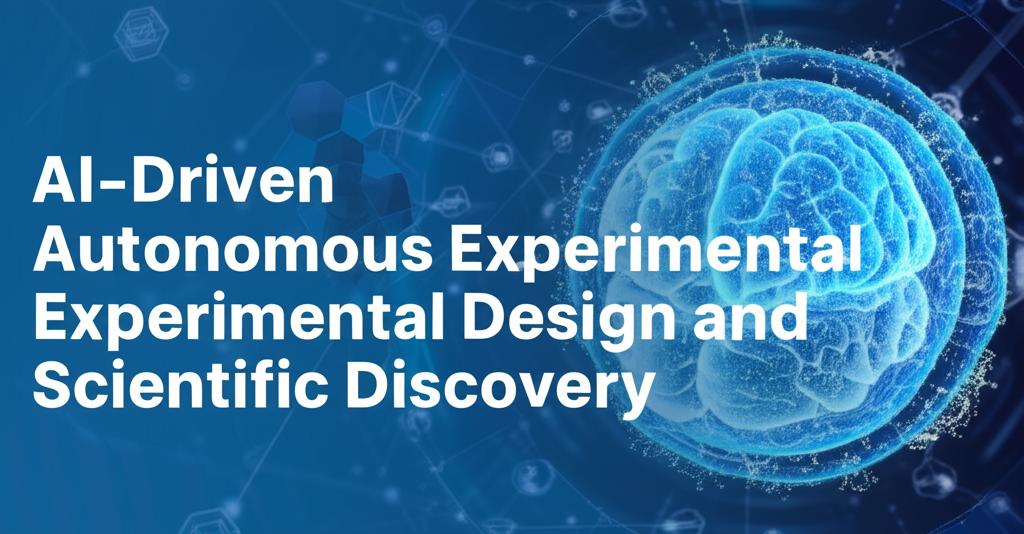Artificial intelligence is fundamentally reshaping the landscape of scientific research, ushering in an era where experimental design and discovery are increasingly autonomous. This transformation is powered by "self-driving labs" (SDLs) – highly automated research facilities using AI to independently design, execute, analyze, and even iterate on experiments. Much like autonomous vehicles navigate roads using sensors and AI, these labs employ robotics, advanced sensors, and intelligent algorithms to manage complex scientific workflows with minimal human intervention.
At the core of this revolution is the concept of closed-loop experimentation. AI algorithms analyze data from previous experiments, learn from the results, and then design the next set of experiments to optimize towards a specific goal or test a new hypothesis. This iterative cycle allows for rapid exploration of vast experimental possibilities, far exceeding the pace of traditional, manual methods. Frameworks like DOLPHIN and AI systems like AI Scientist-v2 exemplify this, generating research ideas, running experiments (physically or via simulation), evaluating outcomes, and refining future steps autonomously.
The benefits are profound. SDLs promise to dramatically accelerate the pace of scientific discovery, reducing the time and cost associated with research and development – potentially by factors of ten. They operate continuously, increasing throughput and enhancing the quality and reproducibility of data. This efficiency allows scientists to shift their focus from repetitive lab work to higher-level strategic thinking, creative problem-solving, and interpretation of results. Furthermore, AI-driven labs democratize access to advanced research capabilities. By encapsulating expert knowledge and processes, they enable smaller labs or those without specialized expertise to conduct complex experiments. Open-source platforms like Merck KGaA's BayBE further this democratization by providing access to powerful AI planning tools.
AI's role extends beyond mere automation. Advanced AI models, including large language models (LLMs), can analyze immense scientific databases, incorporate the latest findings into experimental planning, generate hypotheses, write code, and even draft scientific papers. Systems like Sakana AI's AI Scientist-v2 have already demonstrated the ability to generate a hypothesis, design experiments, and author a peer-reviewed paper with minimal human input. AI tools can also process and interpret massive datasets far quicker than humans, identifying subtle patterns and correlations crucial for breakthroughs.
Applications are emerging across diverse scientific fields. In materials science, AI-driven systems like Polybot are discovering and optimizing materials, such as electronic polymers for flexible electronics, by autonomously fine-tuning processing conditions. In biology and medicine, AI aids in drug discovery, genomics, predicting protein structures (like AlphaFold), diagnosing diseases, and optimizing gene-editing protocols. AI is also making impacts in chemistry, physics, astronomy, and environmental science, analyzing particle accelerator data, identifying exoplanets, modeling climate change impacts, and designing quantum experiments.
However, the rise of AI in autonomous research is not without challenges. Ensuring the precision and reliability (instruction fidelity) of AI controlling lab equipment is critical, as minor errors can invalidate results or pose safety risks. Data reliability and model robustness are paramount; AI is only as good as the data it learns from. Determining the appropriate level of autonomy and maintaining human oversight is a delicate balance, requiring clear governance protocols to prevent wasted resources or unintended consequences. Ethical considerations, including potential biases inherited from data or algorithms and transparency in AI decision-making, must be carefully managed. Reproducibility can also be an issue if AI methodologies are not clearly documented.
The integration of AI is also changing the role of human scientists. Rather than replacing them, AI is augmenting their capabilities, creating demand for new interdisciplinary roles like "AI Lab Orchestrator" or "Automation Scientist" who can bridge biology, data science, and engineering. Future skills will involve overseeing AI systems, validating AI-generated results, and focusing on the creative aspects of experimental design and interpretation.
Looking ahead, AI-driven autonomous labs are expected to tackle increasingly complex research tasks, moving beyond routine screening to multi-step experimental processes like engineering cell lines. The integration of multi-modal AI that can converse with scientists, combined with advancements in robotics and supporting infrastructure (like cloud labs and automation-as-a-service), will further accelerate progress. The synergy between AI, automated experimentation, and human ingenuity promises to redefine the scientific method itself, driving innovation at an unprecedented scale and potentially ushering in a new golden age of discovery.

